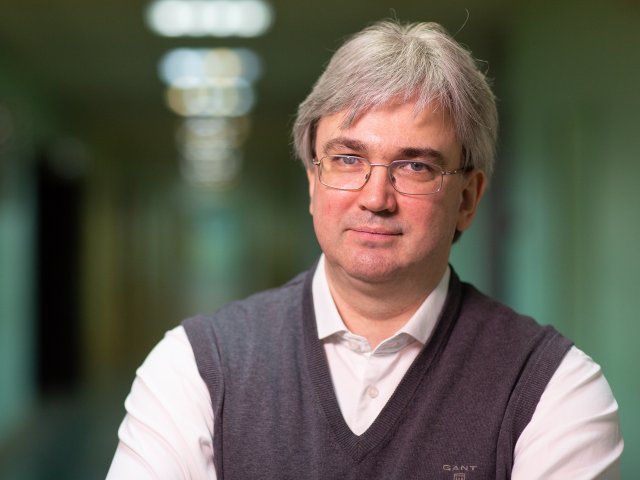Surgery is only able to treat liver cancer in 20% of cases. Chemotherapy also helps only one in five patients. Radioembolization can stop tumor development by delivering a radionuclide preparation to vessels that supply the tumor. Such treatments are now available in Russia: On April 9, four similar operations were carried out at the A. F. Tsyba Medical Radiological Science Center, and leading oncologists are now making this treatment available to all Russians.
Photo: Andrey Luft, Scientific Russia
Until 2018, radioembolization was not available in Russia. The method relies on radionuclide-filled microspheres to arrest cancer development – and these were manufactured in Canada and Australia: high costs and logistical difficulties limited therapy options for Russian patients. About three years ago, the Ministry of Healthcare joined Rosatom, Bebig, and the National Medical Research Center for Radiology in an effort to launch domestic production of emboli. From 2019 to 2021, with the help of radioembolization, specialists had already helped eight patients, not counting the four treatments performed in April. European clinics where radioembolization is practiced carry out about fifty procedures per year. This is a target that the A. F. Tsyba Medical Radiological Science Center is also seeking to achieve.
Valery Kucherov
“This is a treatment that has been increasingly gaining ground worldwide. Yet, we should understand clearly that this is a high-tech, expensive operation, which, even by Western standards, is not affordable for every clinic. On balance, this is a highly effective treatment. It is possible to perform these treatments at our facilities. We have the personnel with appropriate training, and we have adequate experience,” Valery Kucherov, the head of the department of X-ray surgery techniques for diagnostics at treatment at the A. F. Tsyba Center, said at the press conference.
“A month after having my treatment, I ventured out to pick mushrooms,” recalls Alexander Strakhov, a patient of the center. He underwent radioembolization of the liver in 2019, and he works currently at his radio engineer’s job. “In two years after completing my treatment, I gained 10 kilograms. I lost 15 before I was treated,” recalls Alexander Strakhov as he notes that he feels good.
Surgeon Arthur Petrosyan has performed about ten liver radioembolization surgeries. His colleagues say that this is top-precision surgical work that combines new technologies with experience. Radioembolization is a two-stage procedure. The first stage is diagnostics when doctors locate the artery that supplies the tumor with blood. After they make sure they found the right artery, the doctors introduce a diagnostic radiopharmaceutical drug. A scan is then performed by doctors to check if the diagnostic drug escapes to any organs and systems other than the tumor. When this is the case, they advise against treatment. If diagnostics confirms the possibility of treatment, surgeons repeat the procedure in two weeks replacing the diagnostic drug with a treatment drug – microspheres measuring 25 to 40 micrometers. About fifteen percent of patients with hepatocellular liver cancer have contraindications to radioembolization – shunts result in the drug ending up in other tissues of the body, which is unacceptable.
Experts view radioembolization techniques as promising for the development of oncology. The treatment is highly effective for liver cancer patients. Furthermore, it can be performed in cases when other surgeries are contraindicated. This is a treatment with a colossal impact, notes Andrey Kaprin, RAS Academician and the general director of the National Research Center for Radiology. Similar surgeries can target carcinomas successfully in other organs as well. What we haven’t discovered yet is the mode of administering the drug to other organs. We have to approach the effort systematically by setting up a “team of authors.”
Andrey Kaprin
“Having an established system will expand the use of radionuclides in treatment and diagnostics. There is a complex of promising radionuclides – 20 to 25 drugs that will surely work well. It is important to establish system, a team, and to demonstrate that it works. Then the nation will believe us, and it will be possible to enter the market of medical tourism confidently,” said Andrey Kaprin.
The A. F. Tsyba Center has so far been the only center nationwide having appropriate capabilities. The Ministry of Healthcare approved a clinical testing protocol for performing radioembolization of the liver with domestically manufactured microspheres. Hopefully, in a few years the treatment will become covered by the program of government-guaranteed free medical care for citizens.
Doctor Artur Petrosyan and the head of the department of department of X-ray surgery techniques for diagnostics at treatment Valery Kucherov explain and show the treatment procedure:
Press conference at the A. F. Tsyba Medical Radiological Science Center:
































